The Leibniz-IZW is an internationally renowned German research institute. It is part of the Forschungsverbund Berlin e.V. and a member of the Leibniz Association. Our goal is to understand the adaptability of wildlife in the context of global change and to contribute to the enhancement of the survival of viable wildlife populations. For this purpose, we investigate the diversity of life histories, the mechanisms of evolutionary adaptations and their limits, including diseases, as well as the interrelations of wildlife with their environment and people. We use expertise from biology and veterinary medicine in an interdisciplinary approach to conduct fundamental and applied research – from the molecular to the landscape level – in close dialogue with the public and stakeholders. Additionally, we are committed to unique and high-quality services for the scientific community.
+++ Current information on African swine fever: The Leibniz-IZW conducts research on the population dynamics, on models of disease outbreaks in wild boars and on the ecology and human-wildlife interaction in urban areas. African swine fever is a reportable disease in domestic swine and therefor is the purview of the respective federal state laboratories and the Friedrich-Loeffler-Institut (Federal Research Institute for Animal Health) FLI. +++
News
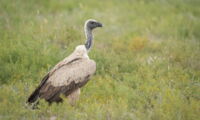
Protected areas in Africa are too small to safeguard rapidly declining vulture populations
Vultures perform important ecosystem functions as they clean the landscape by eating carcasses and thus limit the spread of wildlife diseases. Yet, vulture populations are rapidly declining, mainly owing to intentional and unintentional poisoning. Against this background, an international team of scientists performed the first comprehensive comparative analysis of movement data of three species of threatened Gyps vultures across Africa. They found that individual home ranges can be as large as 75,000 km² and thus significantly exceed existing protected areas. These results are published in the journal “Biological Conservation”. Clearly, larger “Vulture Safe Zones” need to be established to safeguard vulture populations. A new project at the Leibniz Institute for Zoo- and Wildlife Research (Leibniz-IZW) aims to further advance scientific evidence for vulture conservation through newly developed tags equipped with an Artificial Intelligence (AI) and Internet of things (IoT) communication technology in satellite networks.
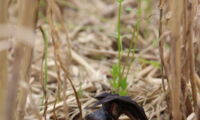
Death of bats at wind turbines interrupts natural food chains
The numerous casualties of bats at wind turbines (WT) have a negative impact on the populations of affected species and potentially far-reaching consequences for the biodiversity in rural areas. Until now, it could only be assumed that the death of bats had further consequences. Now, a team of scientists from the Leibniz Institute for Zoo and Wildlife Research (Leibniz-IZW) show in a paper in the scientific journal "Conservation Science and Practice" that natural food chains are interrupted, which can have far-reaching negative consequences for agriculture and forestry. The study demonstrates the extent to which the functional importance of bats for habitats has been underestimated so far.
Read more … Death of bats at wind turbines interrupts natural food chains
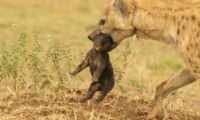
Fewer and weaker offspring – snare injuries decrease reproductive performance of female hyenas in the Serengeti
Indiscriminate snaring for bushmeat hunting may have varying collateral effects on non-target species, ranging from mild injuries to death. Beyond immediate mortalities these effects are rarely examined. A team of scientists from the Leibniz Institute for Zoo and Wildlife Research (Leibniz-IZW) now analysed the life-history consequences of debilitating snare injuries in individually known female spotted hyenas between 1987 and 2020 in the Serengeti National Park, Tanzania. The long-term data revealed that injuries did not decrease the age expectancy of the hyenas, but hampered their reproductive performance. Debilitating injuries caused by snares delayed their age at first reproduction, decreased the size of their litters and reduced the survival of their offspring. These findings are published in the scientific journal “Animal Conservation”.
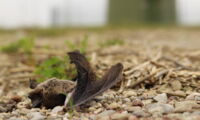
Wind turbines operating without curtailment claim many victims among protected bat species in Germany
Protected and rare bats regularly die at wind turbines (WT). This is why the operation of new wind turbines is temporarily curtailed during periods of high bat activity. Old wind turbines run without curtailment, however. A scientific team led by the Leibniz Institute for Zoo and Wildlife Research (Leibniz-IZW) has now produced an exemplary estimate of bat fatality rates at such old turbines by systematically recording bat carcasses in the vicinity of the turbines. During two months, 70 bats died on average per wind turbine. Even if these figures cannot be extrapolated one-to-one to all 20,000 old turbines in Germany, there is a considerable need for action. The operation of old turbines should be adjusted to the current regulations for new turbines, the authors argue in an article published in the scientific journal “Global Ecology and Conservation”.
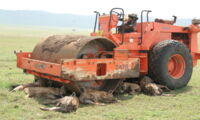
The “fuel of evolution” is more abundant than previously thought in wild animals
Darwinian evolution is the process by which natural selection promotes genetic changes in traits that favour survival and reproduction of individuals. How fast evolution happens depends crucially on the abundance of its “fuel”: how much genetic difference there is in the ability to survive and reproduce. New research by an international research team with participation of the Leibniz Institute for Zoo and Wildlife Research (Leibniz-IZW) has now discovered that the raw material for evolution is much more abundant in wild animals than previously believed. The findings were published in “Science”.
Read more … The “fuel of evolution” is more abundant than previously thought in wild animals

Mothers of twins are not more fertile, just lucky
Are women who have twins more fertile? While previous studies concluded they are, a detailed analysis of more than 100,000 births from pre-industrial Europe by an international team of scientists shows they are not. The results of the study are now published in the scientific journal Nature Communications.
Read more … Mothers of twins are not more fertile, just lucky
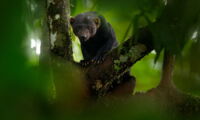
Reference genomes provide first insights into genetic roots of mustelid physiological and behavioural diversity
Mustelids are the most ecologically and taxonomically diverse family within the order Carnivora. From the tayra in the neotropics to the wolverine in the subarctic, they inhabit a variety of ecological niches and developed corresponding species-specific traits related to their diet, reproductive strategy and morphology. An international team of scientists led by the Leibniz Institute for Zoo and Wildlife Research (Leibniz-IZW) conducted a comparative analysis of whole genomes of several mustelids to obtain insights into the molecular basis of these adaptations. The team found that multiple sources of genomic variation contributed to candidate genes, including those that change the number, position, orientation or size of genes in a species’ genome. The latter forms of genomic variation are frequently neglected in genome studies of wildlife species, and the authors argue that this needs to change. The results are published in the scientific journal “Molecular Ecology”.
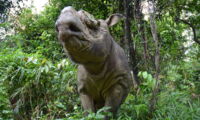
Indonesia and Germany join forces to save biodiversity
IPB University and Leibniz-IZW signed memorandum of understanding to accelerate conservation science and education
Berlin, Germany; 19.05.2022 — Today, the Indonesian “Institut Pertanian Bogor University (IPB University)” and the German “Leibniz Institute for Zoo and Wildlife Research (Leibniz-IZW)” signed a memorandum of understanding (MOU) witnessed by the Indonesian Ambassador, the representative of the Directorate General of Nature Conservation and Ecosystem Ministry of Environment and Forestry of the Republic of Indonesia and the Director of the German Zoo Leipzig. The MOU is outlining a new collaborative strategy for advancing future scientific and educational solutions to local and global sustainability and biodiversity conservation challenges.
Read more … Indonesia and Germany join forces to save biodiversity




